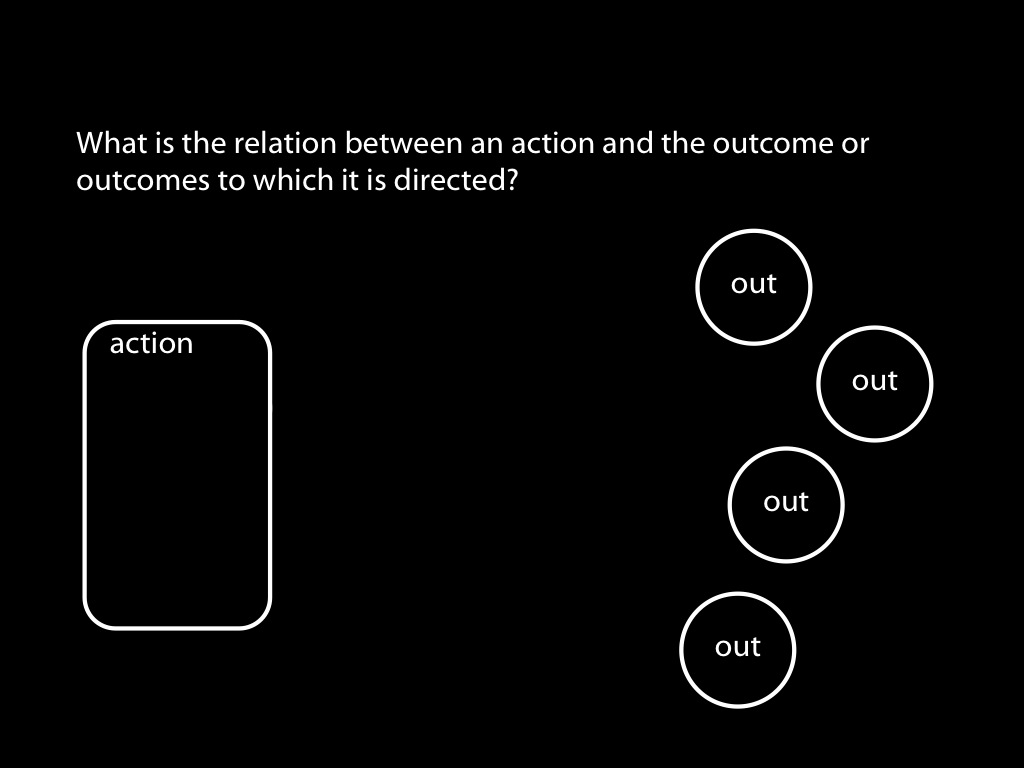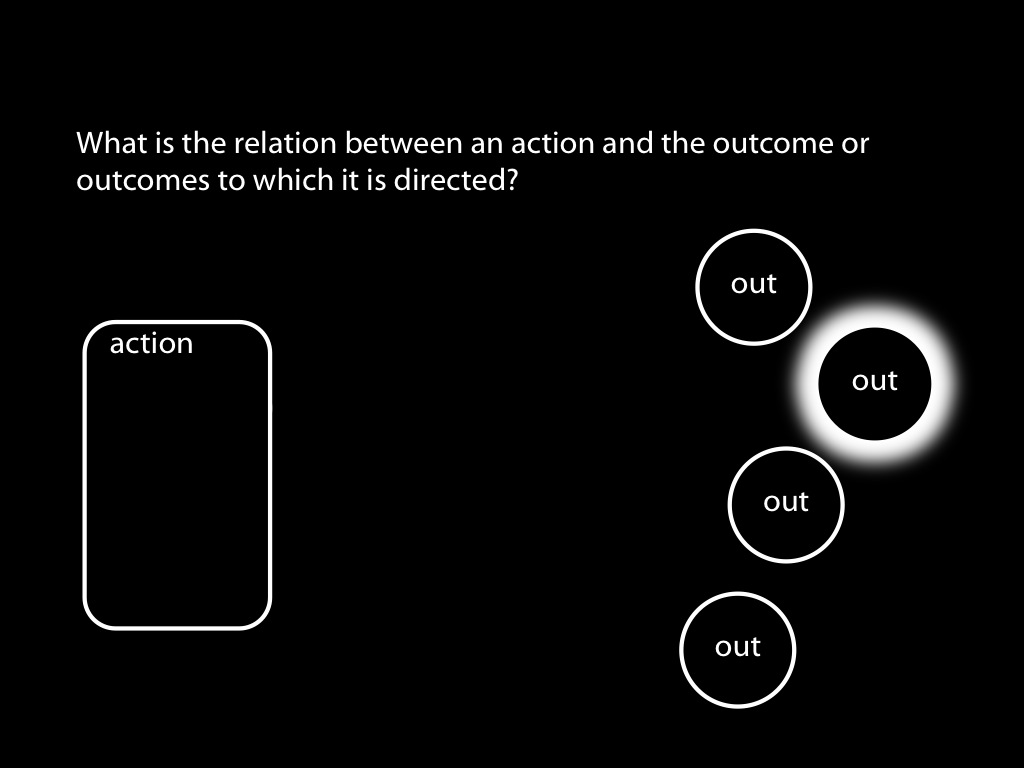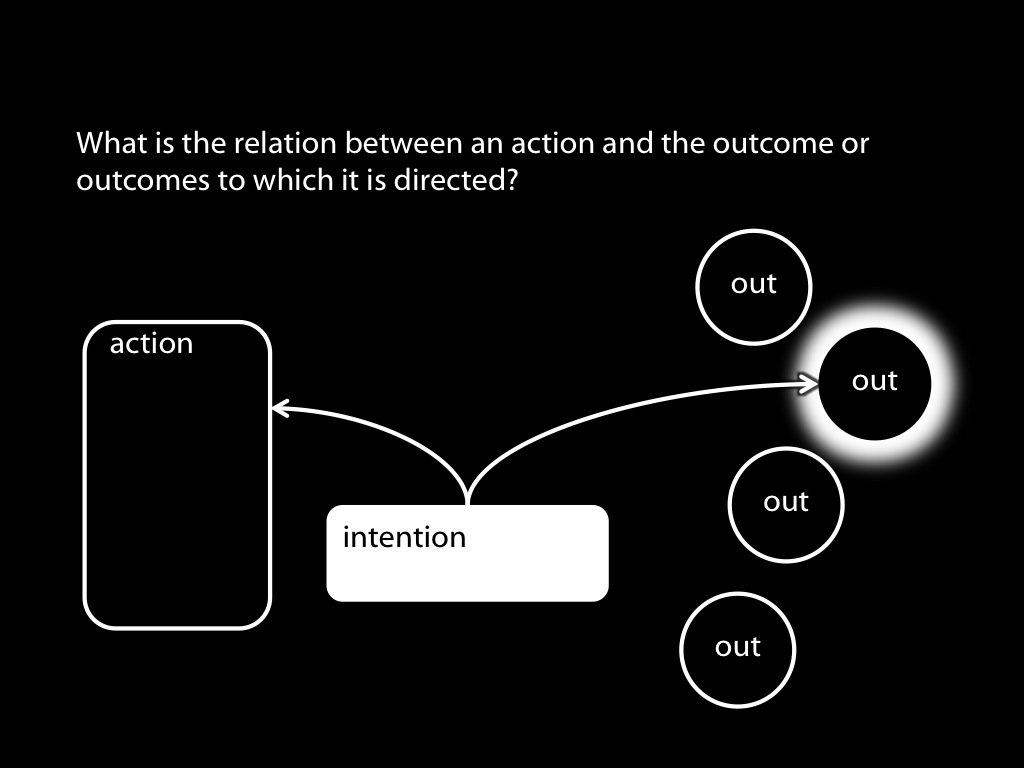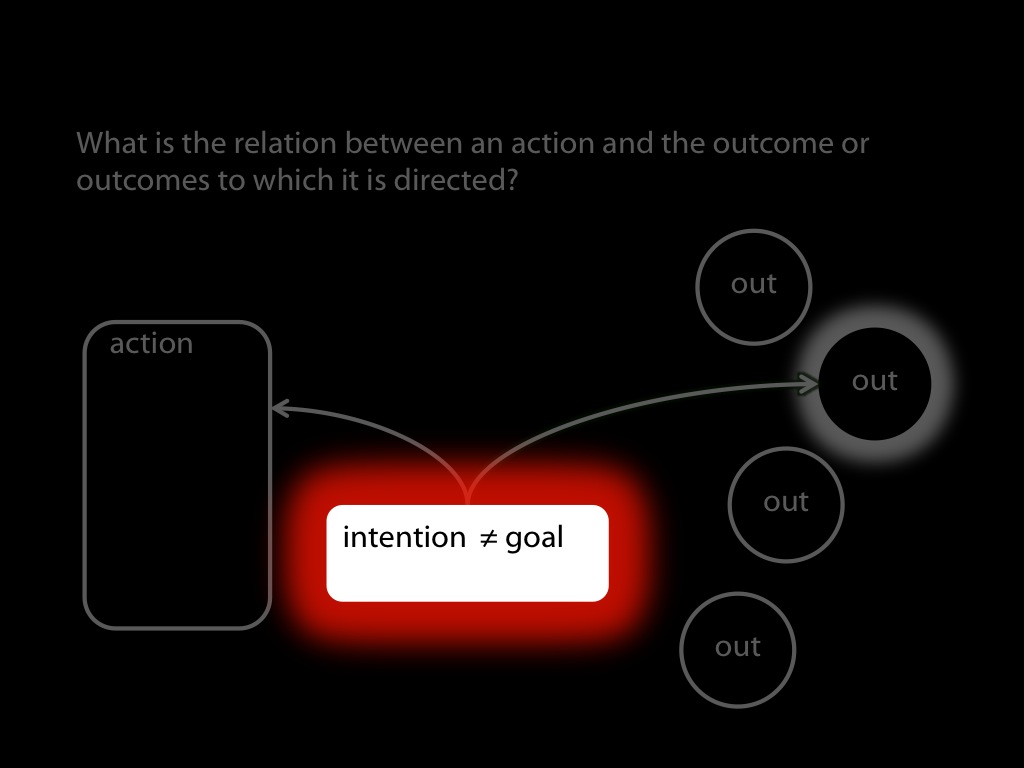Press the right key for the next slide (or swipe left)
also ...
Press the left key to go backwards (or swipe right)
Press n to toggle whether notes are shown (no equivalent if you don't have a keyboard)
Press m or double tap to see a menu of slides
How Do Infants Model Actions?
What model of action underpins six- or twelve-month-old infants’ abilities to track the goals of actions?
What is a model of action?





Does infants’ model involve intentions?
Yes: ‘in perceiving one object as having the intention of affecting another, the infant attributes to the object [...] intentions’
Premack 1990: 14
No: ‘by taking the intentional stance the infant can come to represent the agent’s action as intentional without actually attributing a mental representation of the future goal state’
Gergely et al 1995, p. 188
Sort of:‘to the extent that young infants are limited [...], their understanding of intentions would be quite different from the mature concept of intentions’
Woodward et al 2001, p. 168